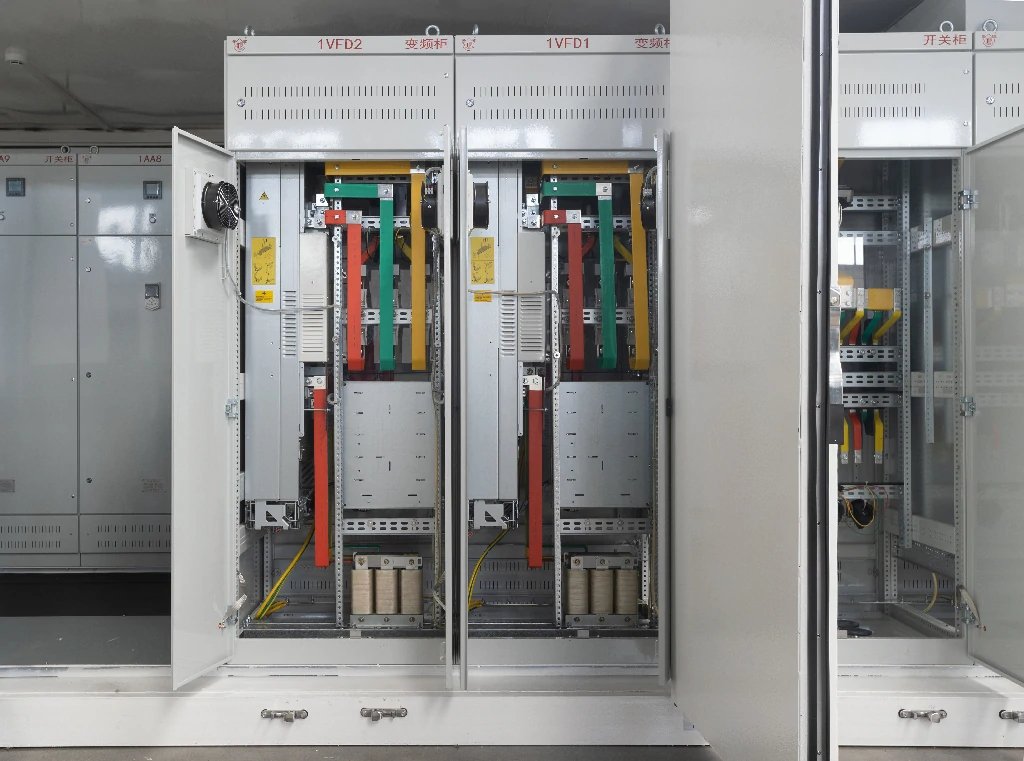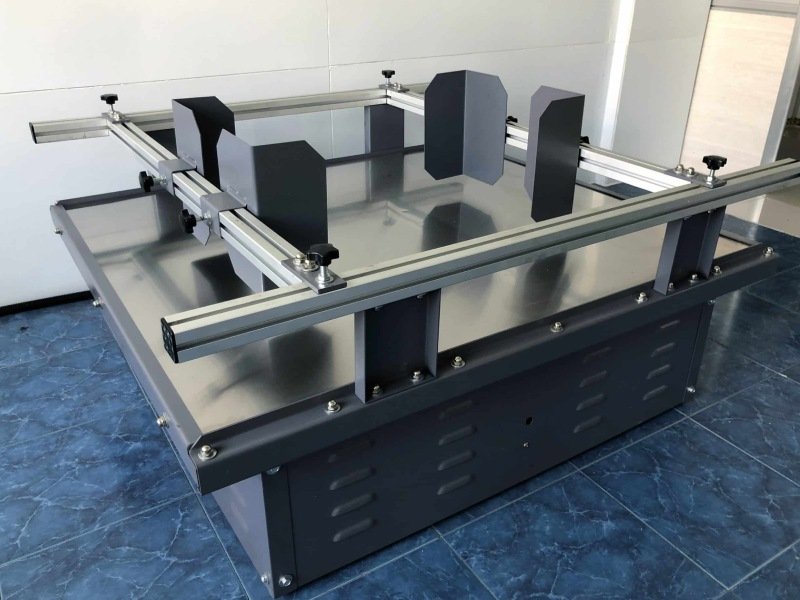The global rollout of 5G technology has ushered in a new era of connectivity, characterized by ultra-fast data speeds, low latency, and unprecedented network reliability. As telecommunications infrastructure evolves to meet these demands, the need for robust, secure, and efficient hardware components has become paramount. Among these components, electrical cabinet latches play a critical role in ensuring the safety, accessibility, and longevity of 5G equipment housed in enclosures. For international buyers sourcing components for 5G infrastructure, understanding the application of electrical cabinet latches is essential to making informed procurement decisions.
This article explores the significance of electrical cabinet latches in 5G technology, delving into their types, materials, design considerations, and specific applications in 5G infrastructure. We will also address the needs of international buyers, highlighting key factors such as compliance with global standards, durability in diverse environments, and emerging trends in smart latching systems. By the end, buyers will have a clear understanding of how to select high-quality latches that meet the unique demands of 5G technology deployments.
The Role of Electrical Cabinet Latches in 5G Infrastructure
5G networks rely on a complex ecosystem of hardware, including base stations, small cells, antennas, and power management systems, all of which are often housed in electrical cabinets or enclosures. These cabinets protect sensitive equipment from environmental hazards, unauthorized access, and electromagnetic interference, ensuring uninterrupted network performance. Electrical cabinet latches are the unsung heroes of this infrastructure, providing secure closure, easy access for maintenance, and environmental sealing to safeguard critical components.
In 5G applications, cabinets are deployed in diverse settings, from urban rooftops to remote rural areas, and must withstand harsh conditions such as extreme temperatures, humidity, dust, and UV radiation. Latches ensure that these enclosures remain securely closed while allowing technicians to access equipment for upgrades, repairs, or routine maintenance. Additionally, the high-frequency millimeter-wave (mmWave) bands used in 5G require specialized enclosures with RF shielding, where latches play a vital role in maintaining a tight seal to prevent signal interference.
Key Requirements for 5G Cabinet Latches
For 5G applications, electrical cabinet latches must meet stringent requirements to ensure reliability and performance:
- Durability: Latches must endure constant use and exposure to environmental stressors without compromising functionality.
- Security: Preventing unauthorized access to sensitive 5G equipment is critical, especially in public or remote locations.
- Environmental Sealing: Latches must provide a weather-tight seal to protect against water, dust, and other contaminants, often meeting standards like IP65 or NEMA 4.
- Ease of Access: Technicians need quick and tool-free access to equipment to minimize downtime during maintenance.
- RF Shielding Compatibility: For mmWave 5G cabinets, latches must support RF shielding to prevent electromagnetic interference.
- Compliance with Standards: Latches must adhere to international standards such as UL, CE, and RoHS to ensure global market compatibility.
Types of Electrical Cabinet Latches for 5G Applications
International buyers have a range of latch types to choose from, each designed to meet specific needs in 5G infrastructure. Below are the most common types and their applications in 5G technology.
1. Compression Latches
Compression latches are widely used in 5G cabinets due to their ability to provide a tight, leak-proof seal. These latches pull the cabinet door or panel against its sealing surface, compressing gaskets to prevent water, dust, or debris ingress. This is particularly important for outdoor 5G enclosures, such as those housing small cells or base station equipment, which are exposed to rain, snow, and dust.
Applications in 5G:
- Outdoor Base Stations: Compression latches ensure weather-tight sealing for cabinets in urban and rural environments.
- mmWave RF Shielded Cabinets: These latches maintain a secure seal to prevent signal leakage in high-frequency 5G applications.
- Power Management Units: Compression latches protect sensitive power electronics from environmental hazards.
Advantages:
- Enhanced sealing for IP65/IP66 compliance.
- Robust construction for high-vibration environments, such as near busy highways or rail systems.
- Available in key-operated or tool-free designs for security and accessibility.
Example: The CTZ-823 Rotation Type Compression Latch, made from polyamide and steel, is designed for quick, secure closure in gasketed applications, ideal for 5G cabinets requiring environmental sealing.
2. Cam Latches
Cam latches operate with a simple turning mechanism, locking or unlocking the cabinet by rotating a cam into a catch or slot. Their low cost and robust construction make them popular for 5G enclosures where frequent access is required but high security is not a priority.
Applications in 5G:
- Indoor Small Cell Enclosures: Cam latches provide easy access for maintenance in controlled environments like office buildings or shopping malls.
- Temporary Installations: Used in portable 5G setups during network testing or events.
- Control Panels: Secure control units in 5G network operations centers.
Advantages:
- Cost-effective and easy to install.
- Available in various materials, including zinc alloy and stainless steel, for corrosion resistance.
- Simple operation reduces maintenance time.
Example: The 1300 Quarter CAM Latch with L-handle and K0200 key locking is a versatile option for 5G control panels, offering a balance of security and accessibility.
3. Multi-Point Latches
Multi-point latches secure cabinet doors at multiple points, distributing locking force across the door to enhance security. These are ideal for large 5G cabinets or those in high-risk areas prone to vandalism or tampering.
Applications in 5G:
- Critical Infrastructure: Used in cabinets housing 5G core network equipment or high-voltage systems.
- Urban Deployments: Secure enclosures in densely populated areas where tampering is a concern.
- Rail and Transportation Systems: Protect underfloor electrical panels in 5G-enabled train systems.
Advantages:
- Enhanced security against forced entry.
- Suitable for large or heavy cabinet doors.
- Compatible with electronic locking systems for added functionality.
Example: The SK1-090 Multi-Point Lock from Shangkun Industrial Technology offers waterproof sealing and key-operated access, making it suitable for 5G cabinets in harsh environments.
4. Electronic Latches
Electronic latches integrate with smart access control systems, allowing remote or app-based operation. These are increasingly popular in 5G infrastructure due to the rise of smart cities and IoT-enabled networks.
Applications in 5G:
- Smart City Deployments: Secure cabinets in urban 5G networks with remote monitoring and access control.
- Data Centers: Protect server racks supporting 5G backhaul networks.
- Critical Infrastructure: Enable secure, keyless access for authorized personnel in utility or telecom facilities.
Advantages:
- Integration with IoT systems for real-time access monitoring.
- Enhanced security through biometric or app-based authentication.
- Reduced need for physical keys, minimizing key management issues.
Example: The Electronic Deadbolt Lock from KDM offers high-efficiency, durable solutions for 5G cabinets requiring advanced security.
5. Quarter-Turn Latches
Quarter-turn latches provide a quick and simple locking mechanism, requiring only a 90-degree turn to secure or release the cabinet. They are commonly used in 5G enclosures where rapid access is needed without compromising security.
Applications in 5G:
- Maintenance-Friendly Enclosures: Ideal for cabinets requiring frequent technician access, such as roadside small cells.
- Distribution Boxes: Secure power or signal distribution units in 5G networks.
- Weatherproof Enclosures: Often paired with compression features for outdoor applications.
Advantages:
- Quick operation reduces downtime during maintenance.
- Tamper-resistant designs enhance security.
- Available in IP65-rated versions for outdoor use.
Example: The 21mm Thread Cabinet Latch from KDM is a quarter-turn latch designed for 5G distribution boxes, offering corrosion resistance and competitive pricing.
Materials and Finishes for 5G Cabinet Latches
The material and finish of electrical cabinet latches significantly impact their performance in 5G applications. International buyers must consider the environmental conditions and operational requirements of their 5G deployments when selecting latch materials.
Common Materials
- Stainless Steel: Offers excellent corrosion resistance and durability, making it ideal for outdoor 5G cabinets exposed to moisture, salt, or extreme temperatures.
- Zinc Alloy: Provides a cost-effective balance of strength and corrosion resistance, suitable for indoor or semi-outdoor 5G enclosures.
- Polyamide (PA6 GFR 30): Lightweight and resistant to chemicals, polyamide is used in compression latches for 5G cabinets in harsh environments like marine or industrial settings.
- Galvanized Steel: Offers robust protection against rust, commonly used in heavy-duty latches for utility or rail applications.
- Aluminum: Lightweight and corrosion-resistant, ideal for portable or rooftop 5G enclosures.
Finishes
- Powder Coating: Enhances durability and provides a sleek, aesthetic finish, often used in urban 5G deployments.
- Chrome Plating: Offers a bright, corrosion-resistant finish for indoor or controlled environments.
- Nickel Plating: Provides additional protection against wear and tear, suitable for high-vibration 5G applications.
- Anodizing: Used for aluminum latches to improve corrosion resistance and aesthetic appeal.
Example: The DK602 Latch from DirectIndustry features a black powder-coated zinc die-cast (ZDC) housing, offering durability and an attractive finish for 5G control cabinets.
Design Considerations for 5G Cabinet Latches
When sourcing latches for 5G applications, international buyers must consider several design factors to ensure compatibility with their infrastructure:
- Environmental Resistance: Latches must meet IP65, IP66, or NEMA 4 standards to withstand dust, water, and UV exposure in outdoor 5G deployments.
- Security Features: Key-operated, combination, or electronic latches provide varying levels of security, depending on the application’s risk profile.
- Ease of Installation: Latches with simple mounting systems reduce installation time and costs, critical for large-scale 5G rollouts.
- Ergonomic Design: Handles and latches should be easy to operate, even with gloves, to facilitate maintenance in cold or hazardous environments.
- RF Shielding: For mmWave 5G cabinets, latches must maintain a tight seal to prevent electromagnetic interference, as seen in products like those from Rohde & Schwarz or ETS-Lindgren.
Applications of Electrical Cabinet Latches in 5G Technology
1. Base Stations and Small Cells
5G networks rely on a dense network of base stations and small cells to deliver high-speed connectivity. Electrical cabinet latches secure the enclosures housing radio units, antennas, and power systems. Compression and quarter-turn latches are commonly used to ensure weather-tight sealing and quick access for maintenance.
Example: In urban small cell deployments, compression latches like the SLS-6150-1 Stainless Steel Over-Center Lever Latch provide robust sealing and easy operation.
2. mmWave RF Shielded Cabinets
The high-frequency mmWave bands used in 5G require specialized enclosures with RF shielding to prevent signal interference. Latches for these cabinets must maintain a tight seal to ensure electromagnetic compatibility (EMC). Multi-point and compression latches are ideal for these applications, as they distribute sealing pressure evenly across the door.
Example: The 5G mmWave RF Shielded Cabinet market, led by manufacturers like Rohde & Schwarz and Anritsu, emphasizes latches that support RF shielding and environmental sealing.
3. Power and Utility Systems
5G networks require reliable power management systems to support continuous operation. Electrical cabinet latches secure power distribution units, battery backups, and cooling systems, protecting them from environmental hazards and unauthorized access.
Example: Heavy-duty compression latches from KDM, finished with nickel plating, are used in power management cabinets for 5G networks, offering durability and corrosion resistance.
4. Rail and Transportation Systems
5G-enabled transportation systems, such as smart trains and autonomous vehicles, rely on underfloor electrical cabinets to house control units and signaling equipment. Multi-point and electronic latches provide the security and durability needed in these high-vibration, high-risk environments.
Example: The energy and utility sector uses robust latches to secure high-voltage systems, as noted in applications for rail systems where vandalism and environmental exposure are concerns.
5. Smart City Infrastructure
As 5G powers smart city initiatives, electrical cabinets housing IoT devices, sensors, and network equipment require advanced latching solutions. Electronic latches with app-based access control are increasingly popular, allowing remote monitoring and secure access.
Example: Latch’s smart access control systems, which integrate with IoT platforms, are ideal for 5G cabinets in smart city deployments.
Trends Shaping the Electrical Cabinet Latch Market for 5G
The cabinet latch market is evolving to meet the demands of 5G technology, with several trends influencing product development:
- Smart Latching Systems: The integration of electronic and IoT-enabled latches is growing, driven by the rise of smart homes and cities. These latches offer remote access, real-time monitoring, and enhanced security, aligning with 5G’s connectivity goals.
- Sustainable Materials: Eco-friendly materials, such as recyclable plastics and low-impact coatings, are gaining traction as manufacturers respond to environmental regulations and consumer demand for sustainability.
- Customization: Buyers increasingly demand latches that match aesthetic and functional requirements, leading to customizable designs with sleek finishes and modular components.
- Child Safety and Accessibility: In residential 5G applications, such as home gateways, childproof latches are becoming essential to prevent accidental access.
- Global Market Growth: The cabinet latch market is projected to grow from USD 1.2 billion in 2023 to USD 2.1 billion by 2032, driven by 5G infrastructure expansion and urbanization, particularly in the Asia Pacific region.
Sourcing Electrical Cabinet Latches: Considerations for International Buyers
International buyers sourcing latches for 5G applications must navigate a complex global supply chain. Here are key considerations to ensure quality and value:
- Supplier Reliability: Choose suppliers with a proven track record, such as KDM, Shangkun Industrial Technology, or Lowe & Fletcher, known for high-quality latches.
- Compliance with Standards: Ensure latches meet international standards like UL, CE, RoHS, and IP/NEMA ratings to avoid compatibility issues in different markets.
- Bulk Purchasing: Wholesale platforms like Made-in-China.com offer cost savings, bulk discounts, and access to a wide range of latch types.
- Customization Options: Work with suppliers offering bespoke solutions to meet specific 5G application needs, such as RF shielding or electronic access control.
- Logistics and Support: Select suppliers with robust after-sales support, timely delivery, and clear communication to streamline procurement.
Recommended Platforms:
- Alibaba.com: Offers a wide range of electrical panel latches with competitive pricing and global shipping.
- DirectIndustry: Provides detailed product specifications and supplier contacts for industrial latches.
- Made-in-China.com: Ideal for bulk purchases and custom orders from verified manufacturers.
Conclusion
Electrical cabinet latches are critical components in the deployment of 5G technology, ensuring the security, accessibility, and durability of enclosures housing sensitive equipment. From compression latches for weather-tight sealing to electronic latches for smart city applications, the right latch can significantly enhance the performance and longevity of 5G infrastructure. International buyers must prioritize durability, security, environmental resistance, and compliance with global standards when sourcing latches, while also considering emerging trends like smart latching systems and sustainable materials.
By partnering with reputable suppliers and leveraging platforms like Alibaba, DirectIndustry, and Made-in-China.com, buyers can access high-quality latches tailored to the unique demands of 5G technology. As the global cabinet latch market continues to grow, driven by 5G expansion and urbanization, informed procurement decisions will be key to building reliable, future-proof telecommunications infrastructure.







